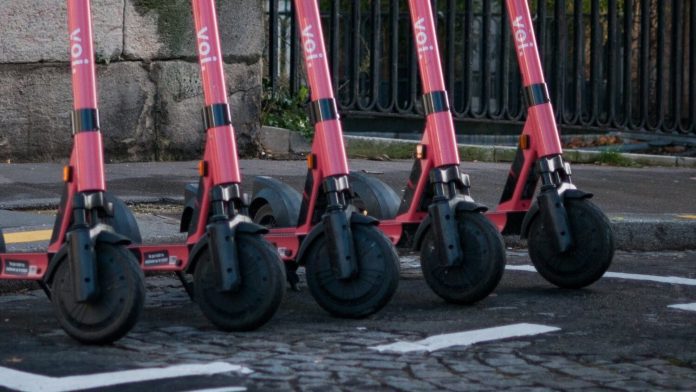The micromobility market, covering electric bikes and scooters (e-scooters), will grow at a compound rate (CAGR) of 16 percent per year to 2027, from around $3 billion in 2019 to $12 billion at the end of the period. The emergence of cellular IoT – specifically of low-power LTE-based NB-IoT and LTE-M networks – is bringing new value to micromobility services, in terms of the lifespan of bikes and scooters, and also in service diagnostics and logistics.
This is the conclusion of a new report by those in the know – and those in the game; cellular vendor Ericsson, mobile operator Arkessa, and micromobility operator Voi handed the job to consultancy Arthur D. Little, to run their rule over their tech and solutions to assess their combined potential, as deployed in micromobility solutions. The result, they reckon, is an e-scooter operator in a largish-sized city can gain $460,000 in annual value with cellular IoT.
The figure extrapolates the benefits – in fleet longevity, and various IoT services – from applying low-power IoT connectivity to a fleet of 3,500 e-scooters in a city of one million inhabitants. Each scooter can provide rides to more than 20 people per day, requiring minimal public space and making almost no noise at all, the report notes. Sixty-nine percent of this value comes from the longer lifespan of e-scooters.
This is achieved with improved service and maintenance via onboard and remote diagnostics – affording the ability to update bikes, fix them before they fail, and locate them when they are lost. Another 26 percent comes from more cost-efficient service logistics – “compared to Bluetooth”. The lines are blurred; the report points to gains from IoT tracking in terms of pick-ups, servicing, and charging.
Five percent of the gains come from more dynamic IoT pricing, so micromobility providers can “understand the driving behaviour of customers, via accurate and detailed data”. The report makes the case, as well, that micromobility offers a way for cities to reduce car traffic, and associated carbon emissions. Replacing car rides with electric scooters could reduce CO2 emissions by up to 61 percent, according to the International Transport Forum.
Increasing the lifespan of electric scooters can reduce CO2 emissions by up to 33 percent, and reducing congestion in cities can reduce CO2 emissions by six percent, according to the same forecast; reducing congestion in cities can potentially reduce CO2 emissions up to 6 percent.
Ericsson calculates the number of cellular IoT connections will more-than-triple from 1.7 billion in 2020 to 5.9 billion in 2026. Cellular IoT is proving popular in the emerging micromobility segment. In 2019, 136 million people took trips on shared bikes and scooters in the US, up 60 percent on 2018. BIS data says 2019 revenues from micromobility services increased by 41 percent and 21 percent in North America and Europe, respectively.
Typically, e-scooters feature six or seven different IoT sensors: a condition sensor to diagnose battery levels and damage; a sound sensor to warn nearby pedestrians; an NFC sensor for online payments and unlocking; a motion sensor to issue signals in case of vandalism or other impacts; a GNSS sensor to map out the location of scooters in a fleet; and air quality and noise sensors to gather environmental data for third parties, such as city councils.
Kyle Okamoto, general manager for IoT at Ericsson, said: “Cellular IoT is not only a stepping stone for micromobility companies to improve and optimize their offerings; IoT has benefits for consumers, cities and the climate at large. By leveraging cellular connectivity IoT, we will see micromobility providers interact more with smart city infrastructure, and this is exciting to see.”
Jonas Rundberg, vice president of software engineering at Voi, said: “We believe in cities free from congestion, noise, and pollution. We believe in cities where citizens can freely move around on their terms. To accomplish this, we have taken the most advanced technology including cellular IoT and made it accessible to everyone.”

